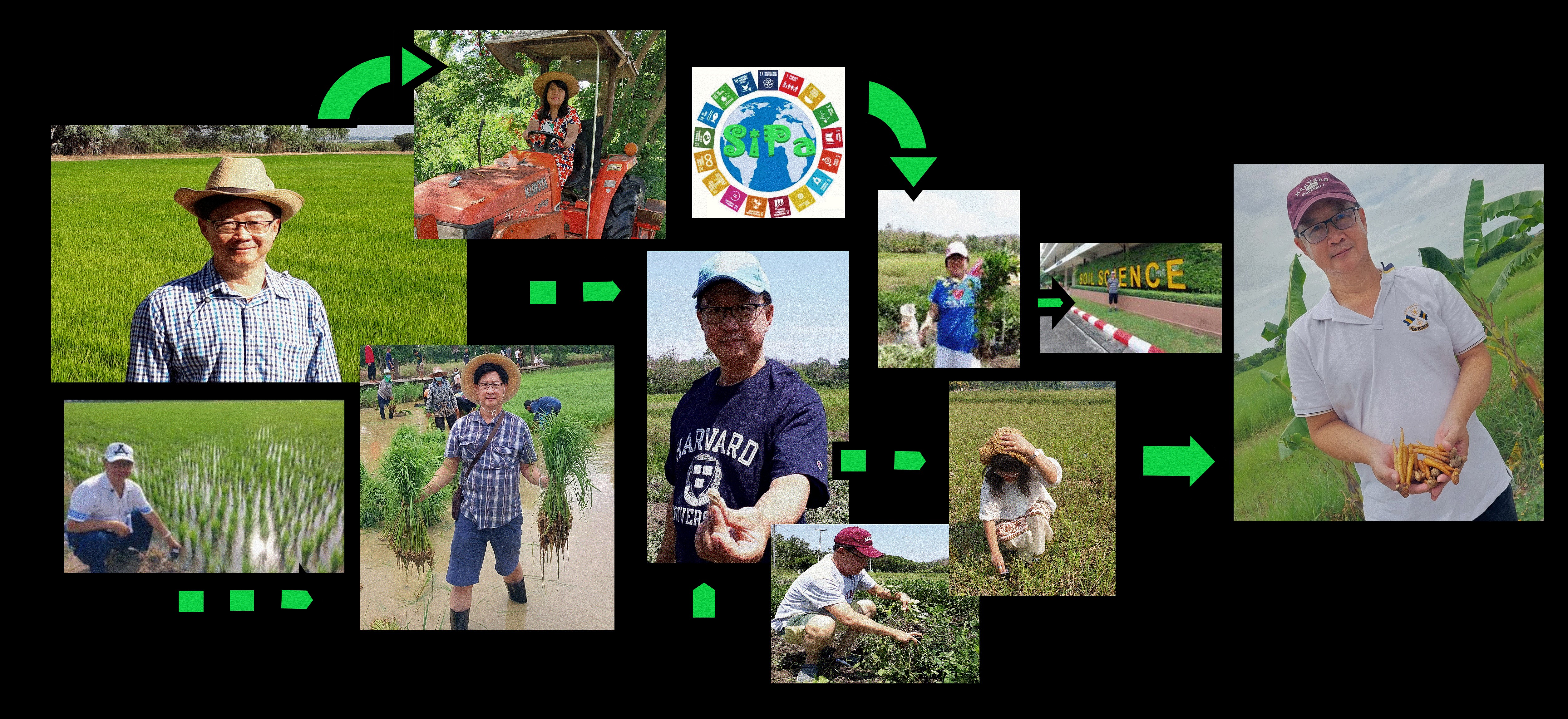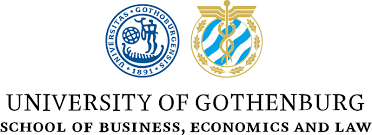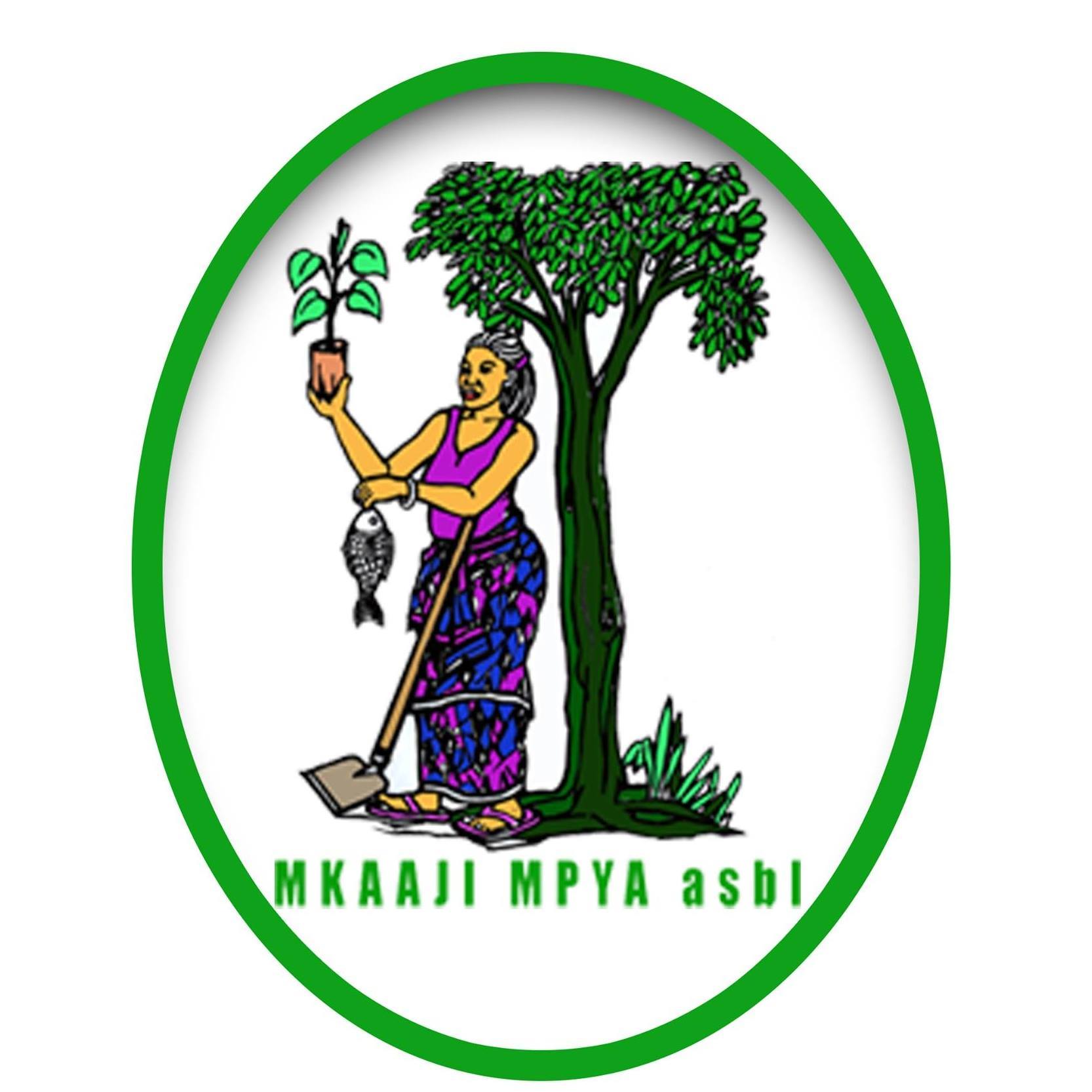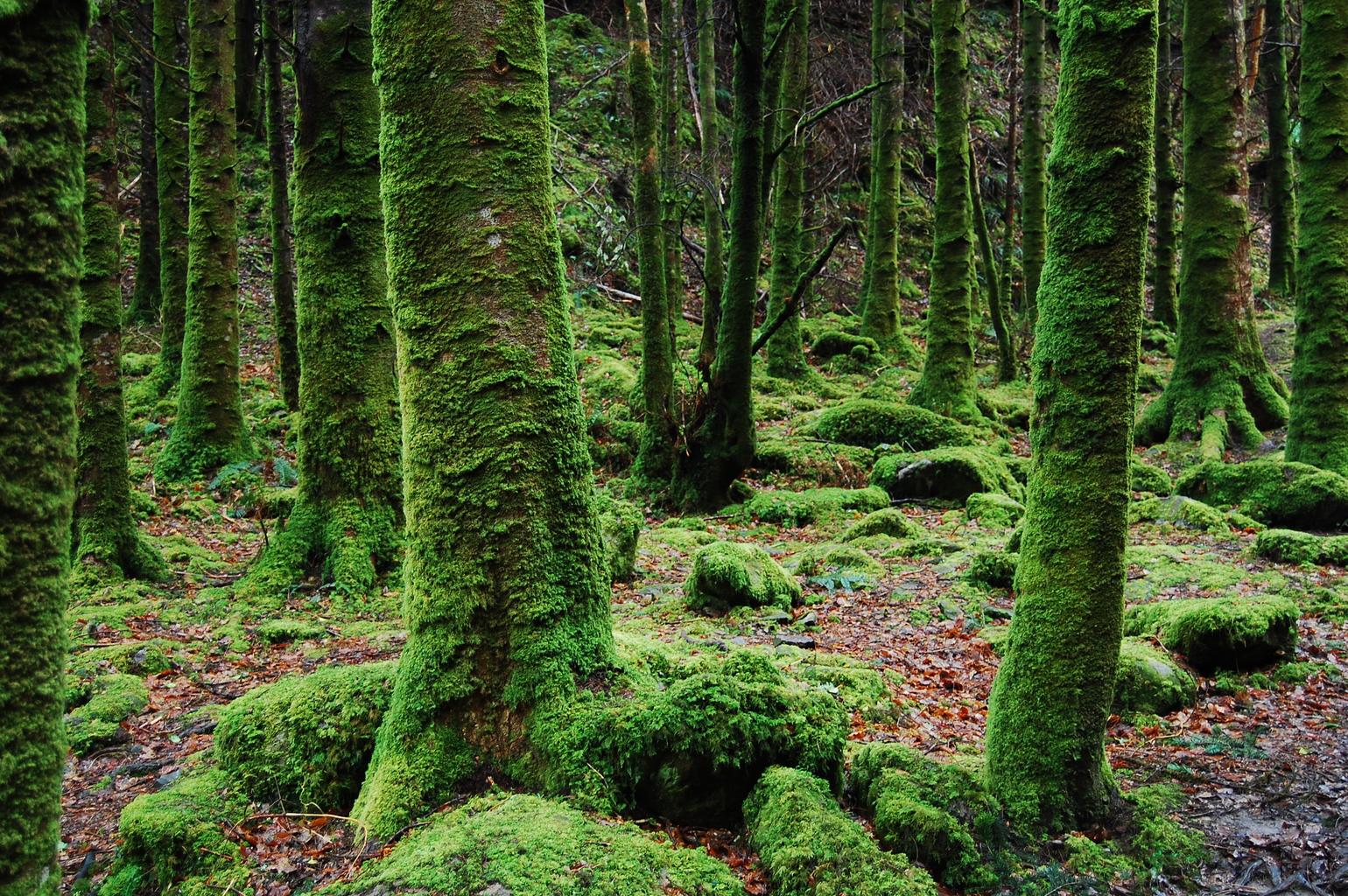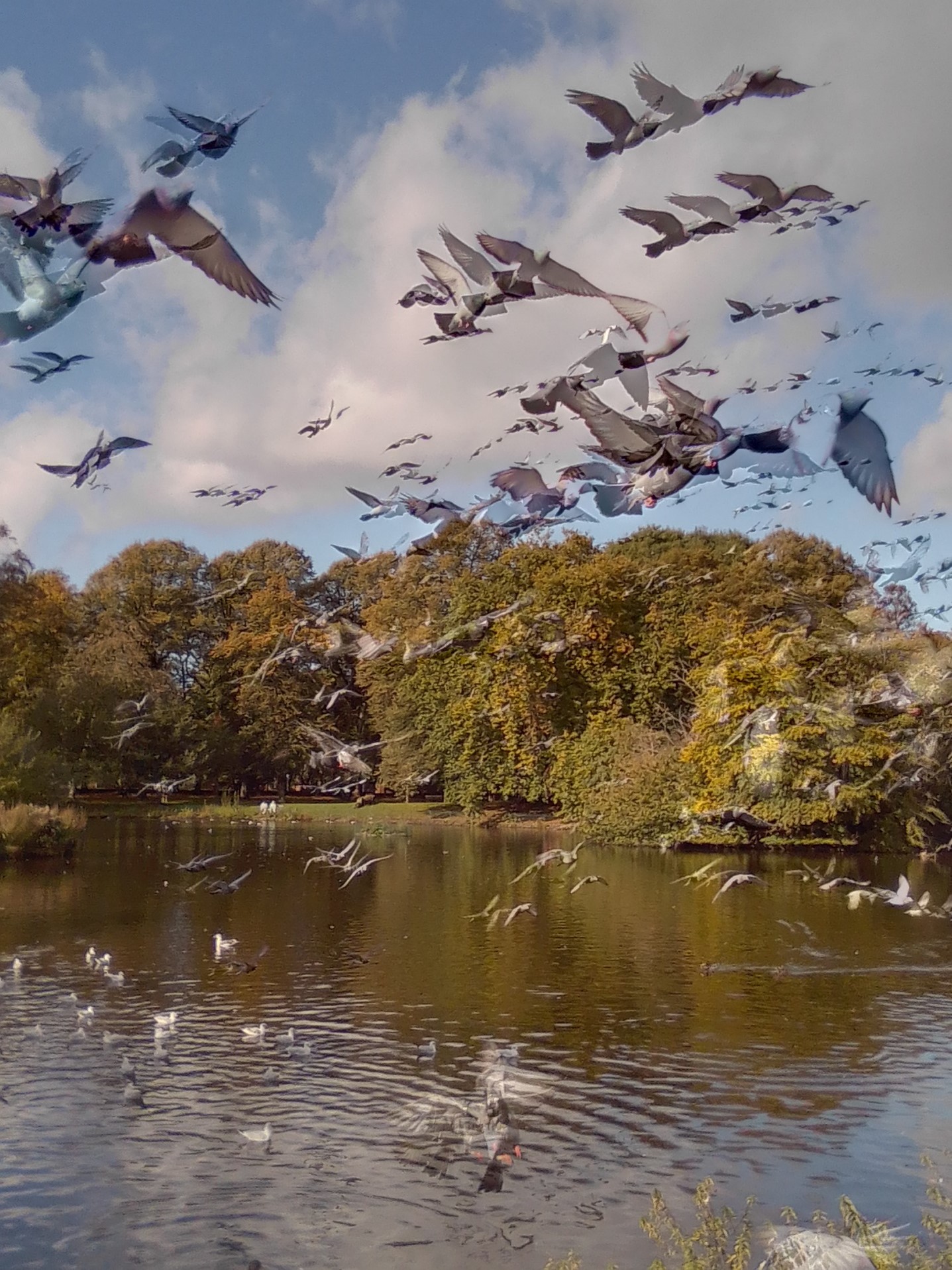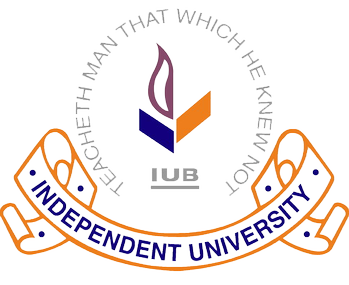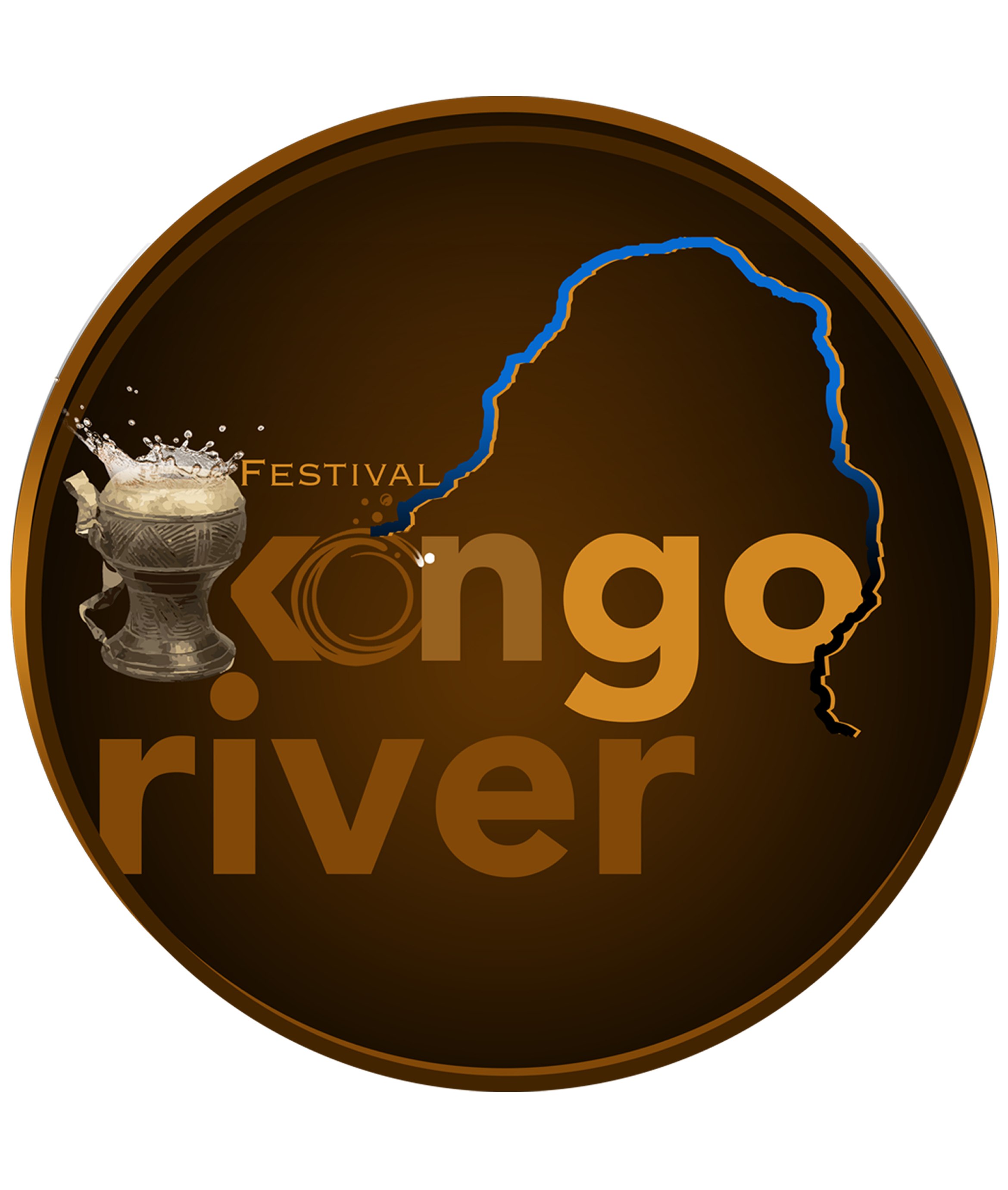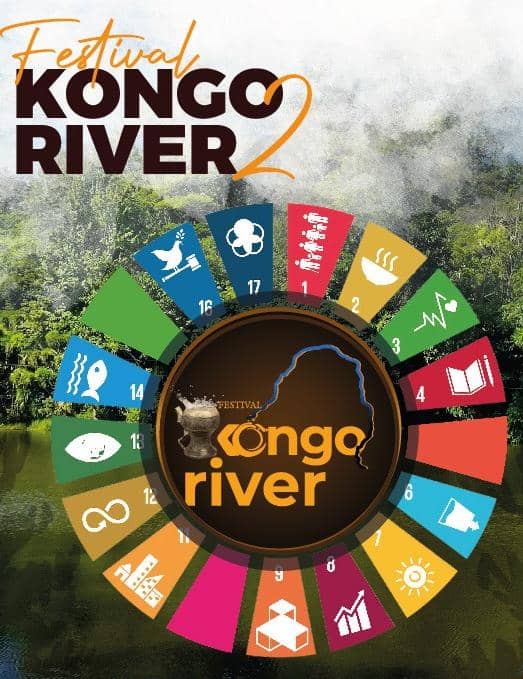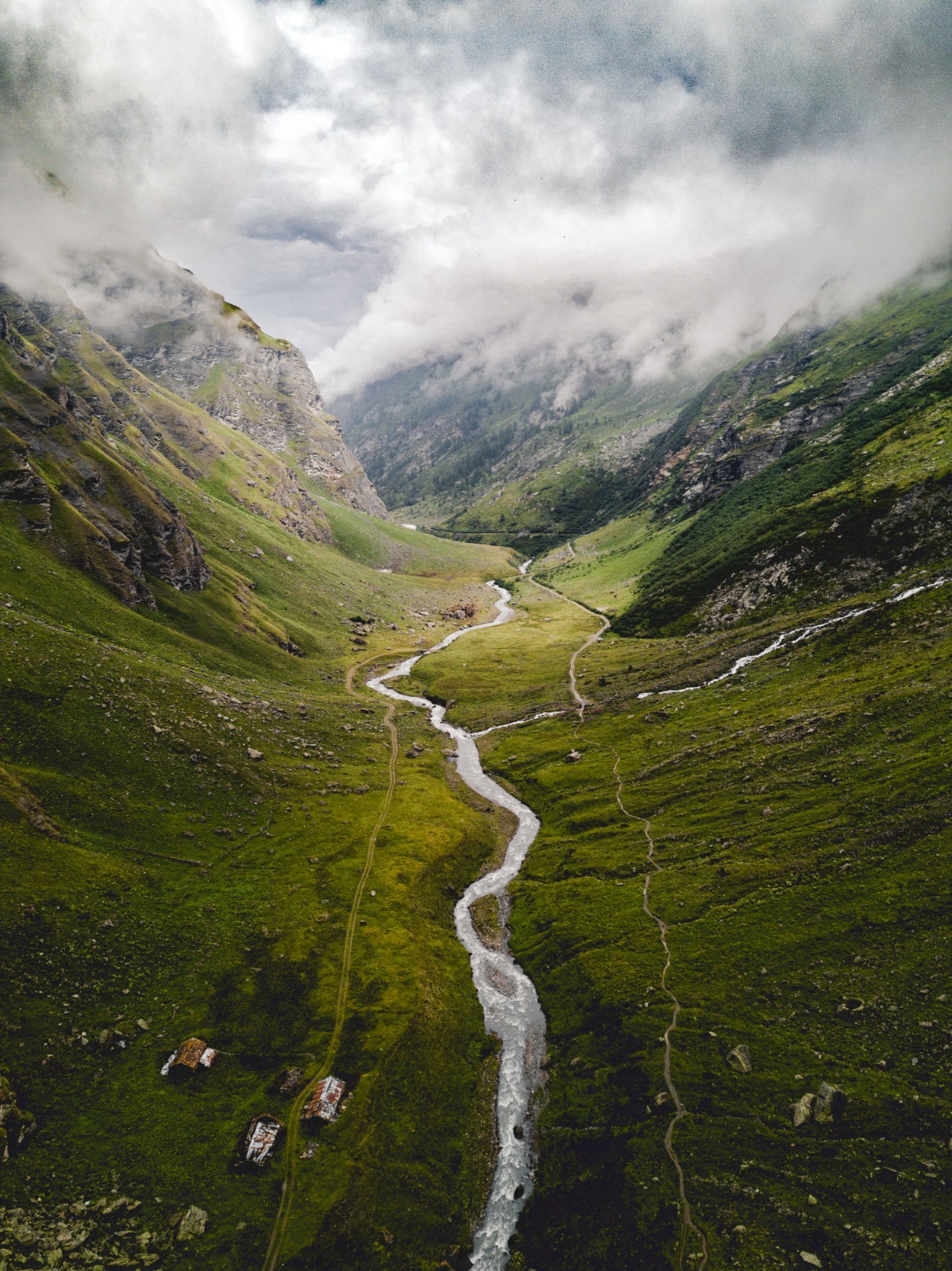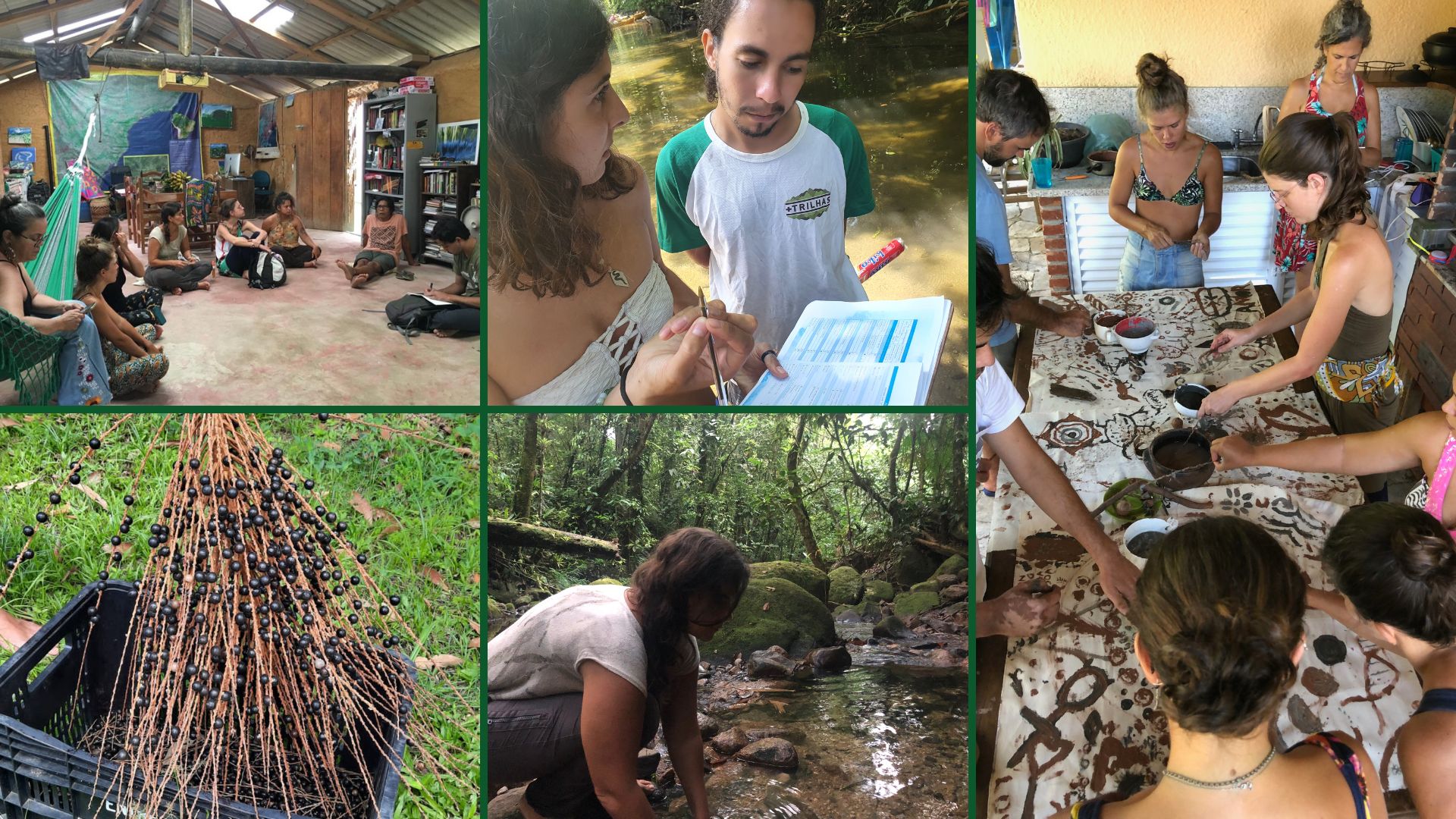Home > Records > Rights of Nature for Peace and Sustainable Development > United Nations, 2022, December 12 to 14, Rights of Nature for Peace and Sustainable Development - Annual International Conference
11th Annual International Conference on Rights of Nature for Peace and Sustainable Development - 12 to 14 December 2022, United Nations Conference organized under the aegis of the United Nations Program for Harmony with Nature
(Other continental or worldwide interested networks, please contact us) Please forward to everybody you know active in the domain.
Below the Call for Contributions (Call for Abstracts).
For all proposal of communication for the Program, please use the form on this page.
Call for Contributions 2022:
International Annual Conference on the Rights of Nature
In the frame of the 14th GENEVA FORUM, December 12-16, 2022
United Nations, Geneva, Switzerland
| Monday 12 December aftermoon, Tuesday 13 December whole day and Wednesday 14 december morning, 2022
from 09:00 to 18:00 Tuesday evening, de 19:00 à 23:00 : Networking Dinner of Rights of Nature Networks |
FREE ENTRANCE UNDER SUBSCRIPTION (United Nations Access Pass) Simple Contribution to the Fees (See Form Below) |
| Presentations will be held in english and french. Debates and questions will be organized in english and french. Thank you to use the form at the bottom of the page to subscribe including only for audience. | |
| Leading Projects of Education to Science and Citizen Sciences since 1992, and creating 1st Participatory Researches Camps in 2004, the NGO Objective Sciences International have the Special Consultative Status to United Nations. Active in all continents, the NGO organize every year, since 2012, the International Annual Conference on Rights of Nature in United Nations, at which one participate all Governments actives in this domain or interested by these works. The objective of this Conference organized into the heart of the United Nations hemicycle is to allow all the actors and operators in these domains to exchange, meet and share directly and at the largest international level. | |
| Interactives Dialogues of the UN and Rights of Nature The experts who are solicited annually by the Bureau of the United Nations in charge of the initiative Harmony with Nature, exchange already at national and continental levels (Europe, North America...) following diverse groups of themes. This Conference organised in December permit to work on the results of the High Level Interactive Dialogues that was done, and to prepare the objects of thinking for the next Interactive Dialogues. The one who want to exchange and share their ideas, practices and solutions, at worldwide level, meet at the end of the year for the International Annual Conference organized in United Nations. | |
Protection of Nature / Legal personality of Nature / Living Beings / Sustainable Development
Several public or associative organizations, and citizens, that are active in the domain of Rights of Nature, federated or organized, at the international level. The main national actors, the federations, and the specific operators, organized presently at the international level, and are called to meet annually at the end of the civil year, at the International Annual Conference on Rights of Nature, at United Nations, in Geneva.
This annual space of sharing results and pooling of skills, allow to the actors of the domain to exchange practices, solutions, ideas, needs.
Your Annual Exchanges Resource
In the following of the national and continental meetings that are organized in each country and continent by the local federation, this International Annual Conference at United Nations allow the actors to implement in consultation, or to inform mutually, of progress and actions they lead during the year, or that they have in project.
The participants at this Conference are:
- Local and regional actors of different countries
- Thematic Actors by disciplines
- Regional or national federations
- Thematic Federations, by disciplines
- Large Institutions of Rights of Nature
- Associations of Defense and Protection of Nature
- Government departments (Environment, Education, Research, Sustainable Development...) and international associations of Ministries
- Specialized Journalists (law, science, environment, education, sustainable development ...)
- UN agencies (UNDP, UNEP ...)
Subjects that are in the agenda of this conference are the axis topics the United Nations Program for Harmony with Nature :
- Earth-centered Law
- Ecological Economics
- Education for a natural behaviour of respect of Nature
- Holistic Science and Researches
- Humanities for Rights of Nature
- Philosophy and Ethics
- The Arts, the Media, Design and Architecture
- Theology and Spirituality front of Rights of Nature
Detailed Program
Exchanges between stakeholders of the meeting will happen in dynamic pitches followed by sub-groups you can contribute, in round table between speakers and of course debates with the audience of the Assembly.
Organiser : NGO Objective Sciences International, Geneva
Chairman:
| Mr Thomas EGLI CEO GENEVA FORUM at United Nations : www.osi-genevaforum.org Know more about Thomas EGLI, Founder of Objectif Sciences International, CEO of the GENEVA FORUM |
Co-Chairpersons:
| M Colin ROBERTSON Lawyer-linguist Member of the Rights of Nature networks |
| Mrs Doris RAGETTLI Founder Rights of Mother Earth : https://www.rightsofmotherearth.com/ |
| Mrs Vanessa HASSON Lawyer Director of MAPAS (Methods to Support Environmental and Social Practices) : http://www.mapas.org.br/ |
Here the Programme of the 5 days of GENEVA FORUM of December 2022, where are described the days dedicated to the Conference on Rights of Nature for Peace and Sustainable Development Goals.
Official Opening Session - Tuesday 13 December 09:00
Session organised in partnership with Rights of Mother Earth, the Bureau Harmony With Nature of United Nations and Objectif Sciences International.
- Keynotes
- Remarks on current situation
- Remarks from the side of the Governmental Representations represented
Presentations currently proposed for 2022
Validated Presentations
The soil conservation by restoring soil’s nutrients ORAL PRESENTATION
Based on research on soil pollution problems solved using organic farming #03 - Experimental Research on Soil for Nutrition, presented at the FAO in the Global Symposium Soil for Nutrition, Rome in July 2022". We would like to share the concept of this project in terms of soil conservation based on the right of nature protection in the environment. Because of the currently of soil in agriculture situation around the world has been destroyed. Both natural disasters due to climate change and humans: by the agricultural chemicals and the use of pesticides that are severely harmful to humans and the environment. In particular, it has a direct effect on the destruction of nutrients in the soil, it completely destroys nutrients that are beneficial to growing crops. The soils are not only the foundation for food, fuel, fiber and medical herbs, but they are also a key in the carbon cycle, storing and filtering water, and improving resilience to floods and droughts too. The degraded soil made the cultivation is of poor quality, yield and lack of nutrients that benefit the consumer’s body. It also affects the shortage of qualified food. Therefore, there is an urgent need for long-term soil improvement and restoration to increase soil nutrients that will be a source of nutrients for humans to be sufficient to sustain their livelihoods. For this research we focus on the quality of soil nutrient improvement by used the legumes The project of soil management by using organic farming by short life cycle planting such as legumes (Green bean, soy bean and peanuts), which can freeze nitrogen gases in the air of which the roots of plants are sucked into the soil by nitrogen fertilizer fixation process into the soil. After harvest, it’s ploughed and buried them for 15-30 days to decomposed and form primary nutrients such as nitrogen, phosphorus and potassium and secondary nutrients such as calcium, magnesium, sulfur into the soil. After the physical and biochemical testing. We found the better level of primary and secondary nutrients in soil were improved in significantly in SPSS testing program by one-way ANOVA revealed that there was a statistically significant difference in defined level between at least two groups (F (2, 291), p = 0.93) from 294 samples of target groups in 50 plot sites in northern of Thailand and we retesting in the soil science-laboratory that the result of soils nutrients value was also significantly satisfactory. Therefore, this project of Soil Conservation by Restoring Soil’s Nutrients is an achieved practical project to support SDG2 - Zero hunger, to improve the soil nutrients for humans sufficient to livelihoods without the effects by the shortage of qualified food. By long-term soil improvement and restoration to increase soil nutrients and can be conservation the soil according to the concept of right of nature in environment protection in the same time. And we are committed more to supporting SDG 3-good health and well-being, we will adding the herbs medical plants which has an inhibitory effect on viruses such as finger roots and ginger, to be the treatment of experimental research next time.
Mr Pathawit CHONGSERMSIRISAKUL, SiPa Research Organization, Bangkok, www.facebook.com/people/Siripen-and-Pathawits-Research-Citing-and-References/100063519369860
Rights of nature and the legal architecture of the oceans ORAL PRESENTATION
Recent studies on ocean connectivity show that humans and the marine environment are inextricably intertwined (Rogers, 2014; Popova et al. 2019) and that the oceans deliver vital ecosystem services for maintaining living conditions on Earth. Although our existence hangs in the balance, human activities continue to severely impact the ocean’s natural systems. Marine biodiversity loss and climate change bring to the fore the legal system’s role in preserving the socio-ecological balance of the marine environment. Undoubtedly, the Law of the Sea has been fertilized by developments taking place in environmental law (e.g., ecosystem approach, area-based management tools). However, the Law of the Sea’s ethos continues to rely on the jurisdictional division of the ocean into maritime zones and the protection of the marine environment is mostly sectoral. Systemic fragmentation problems are rife in the Law of the Sea because institutions, decision-makers and legislation are developed along these sectoral lines with little connectivity. In this current ethos, States play a fundamental stewardship role , but socio-environmental concerns have been overridden by resource-grabbing practices (Ranganathan 2019). To further complicate matters, effects of environmental degradation are felt far away from its sources making it difficult to apply key principles such as the precautionary principle. This is because key factors such as the relevant State/stakeholder and data are changeable as interests and priorities change. Scholars, such as Cloutier de Repentigny (2020) suggest revisiting human geological agency’ to deconstruct current State sovereignty and jurisdiction. The Rights of Nature (RoN) approach goes to the heart of the existing system and argues for reorganizing interests and priorities. This reorganisation is necessary because environmental law principles have failed to mitigate harmful ecological practices and adapt to global ecological change. (Kotzé, 2019).
By including Nature as a subject of law with rights, conversations about the governance of the oceans can transcend sectoral and State-centred boundaries. Theoretically, this paper utilises the RoN approach as a critical lens to examine the role of law where interests are multisectoral and challenges ecologically connected will situate its analysis on shifting paradigms in ocean governance from State-centred to nature-centred. This approach follows the recognition by the UN General Assembly that a paradigm shift from a human-centric society to an Earth-centred global ecosystem; is needed to ensure a resilient planet (UN Doc. A/75/266 (2020)). From a practical perspective, the authors discuss whether RoN has been legally considered in a marine environmental setting. We pay special attention to States leading this discourse such as Ecuador whose 2008 Constitution recognizes Nature as a subject of rights. Arguably, Ecuador’s constitutional recognition could be seen as a pathway from anthropocentric to biocentric law. Our analysis focuses on the jurisprudence developed by States on this issue such as the Ecuadorian Constitutional Court’s reasonings in the 2015 Marmeza case where the Court explicitly acknowledged that aquaculture activities taking place at the Cayapas Mataje Mangrove Ecological Reserve violated the rights of nature. The papers finally reflect on the potential offered by RoN to re-imagine the law of the sea beyond inter-state rules.
REFERENCES:
![]() Cloutier de Repentigny, P. (2020) To the Anthropocene and beyond: The responsibility of law in decimating and protecting marine life’ Transnational Legal Theory 11:180-196.
Cloutier de Repentigny, P. (2020) To the Anthropocene and beyond: The responsibility of law in decimating and protecting marine life’ Transnational Legal Theory 11:180-196.
![]() Kotzé L. (2019) A Global Environmental Constitution for the Anthropocene?’ Transnational Environmental Law 8: 11-33. Marmeza, Case N. 0507-12-EP, Constitutional Court of Justice of Ecuador, Judgement N. 166-15-SEP-CC, 2015
Kotzé L. (2019) A Global Environmental Constitution for the Anthropocene?’ Transnational Environmental Law 8: 11-33. Marmeza, Case N. 0507-12-EP, Constitutional Court of Justice of Ecuador, Judgement N. 166-15-SEP-CC, 2015
![]() Popova, E., et al. (2019) Ecological Connectivity between the Areas Beyond National Jurisdiction and Coastal Waters: Safeguarding Interests of Coastal Communities in Developing Countries’ Marine Policy 104: 90-102.
Popova, E., et al. (2019) Ecological Connectivity between the Areas Beyond National Jurisdiction and Coastal Waters: Safeguarding Interests of Coastal Communities in Developing Countries’ Marine Policy 104: 90-102.
![]() Ranganathan, S. (2019). "Seasteads, land-grabs and international law. Leiden Journal of International Law." Leiden Journal of International Law 32: 205-214.
Ranganathan, S. (2019). "Seasteads, land-grabs and international law. Leiden Journal of International Law." Leiden Journal of International Law 32: 205-214.
![]() Rogers A et al, The High Seas and Us - Understanding the Value of High-Seas Ecosystems (The Global Ocean Commission 2014).
Rogers A et al, The High Seas and Us - Understanding the Value of High-Seas Ecosystems (The Global Ocean Commission 2014).
![]() United Nations General Assembly Seventy-Fifth Session Agenda Item 18. Harmony with Nature. Report of the Secretary General UNGA A/75/266. https://documents-dds-ny.un.org/doc/UNDOC/GEN/N20/199/25/PDF/N2019925.pdf OpenElement
United Nations General Assembly Seventy-Fifth Session Agenda Item 18. Harmony with Nature. Report of the Secretary General UNGA A/75/266. https://documents-dds-ny.un.org/doc/UNDOC/GEN/N20/199/25/PDF/N2019925.pdf OpenElement
![]() Vidas D. (2011) The Anthropocene and the International Law of the Sea’ Philosophical transactions of the Royal Society of London 369: 909-925.
Vidas D. (2011) The Anthropocene and the International Law of the Sea’ Philosophical transactions of the Royal Society of London 369: 909-925.
Mrs Gabriela ARGUELLO, University of Gothenburg, Sweden, www.gu.se/en/school-business-economics-law/law/ocean-law-group
Travelogues and ecological awareness ORAL PRESENTATION
The Centre de Recherches sur la Littérature des Voyages (CRLV), founded at the Sorbonne in 1984 and currently hosted by Aix-Marseille University, will celebrate its 40th anniversary in 2024. It gathers about 1800 members, specialists of various literatures, historians, art historians, geographers and ethnologists, and studies travel literature in its various aspects: documentary, aesthetic and ideological. The field is thus marked out from the simple "travel book" to "literary travel", in synchronicity as well as in diachronicity. Attentive to the "spatial turn", it proposes a research program on travel narratives and the awakening of ecological consciousness, where historical rigor and critical spirit take precedence over the ideological dimension.
Studying the major trends in the writing of the oecumene, the graphy of the earth (or geo-graphy, including the earth at the heart of the "li-terra-ture"), the narrative habitat, through which travelers perceive reality, which are re-examined throughout the pre-modern period, modern and contemporary periods, allows for the exhumation and/or invention of types of narratives that can temper the tendency towards emancipation and abstraction that characterizes the lifestyles and behaviors of our modernity. The CRLV’s project proposes a major research project around these viatical narratives of the Anthropocene. The objective is to reinscribe "Homo viator" in the world and to renew its destiny through a rich palette of writings of nature - descriptions, exphrases, hypotyposes, taxonomies, intermedialities, symbols - and emotions - fear of the future, empathy for the living, sadness, hope, solastalgia.
Mrs Sylvie REQUEMORA, Centre de Recherches sur la Littérature des Voyages (CRLV), France, https://crlv.org
What if traditional practices could conserve biodiversity in rural areas and enforce Nature’s rights? ORAL PRESENTATION
What if traditional practices could conserve biodiversity in rural areas and enforce the rights of Nature? Challenges of biodiversity conservation and violation of Nature’s rights in Congolese rural areas: Experience of the ecological corridor of the Kahuzi Bièga National Park in the Nindja Chiefdom. The Nindja Chiefdom is one of the chiefdoms in the Kabare Territory in South Kivu Province (DRC). In this chiefdom, including the ecological corridor of the park, illegal hunting has become a frequent activity and various other threats to biodiversity are increasing. The populations living in these rural areas consider that not only are their rights of access to natural resources (agricultural land, minerals, wood, etc.) violated, but even more so that the supremacy of their customs, traditions and cultures are totally flouted and will suffer unseen consequences at the present time. Man is reigning even more as a sovereign over the ecosystems in rural areas, but also still considers himself the only living thing on the planet, to the detriment of animal and plant biodiversity, to name but one. We are aware that the Rights of Nature go beyond traditional environmental law, which is limited to protecting a nature that is a tool and property of human beings for the sole purpose of fuelled growth. Unfortunately, this remains a rhetoric in rural areas and requires that traditional, indigenous and cultural knowledge be harnessed for the conservation and survival of local communities. Scientists should also move away from the idea of involving local communities and instead be integrated into these rural communities for sustainable action. Is it not possible to include traditional, indigenous and cultural knowledge as well as customary practices in biodiversity conservation for the respect of the Rights of Nature...? Do we need to rethink approaches to interventions in rural areas? Climate change and the loss of biodiversity is up to us all...
Mr Gervais MUDERHWA NSHOMBO, MKAAJI MPYA asbl, République Démocratique du Congo, https://mkaajimpya.org
PROTECTING THE RIGHTS OF NATURE ORAL PRESENTATION
It is instilled in the constitution of Ghana, the state owner of natural resources including minerals underground and it provides the license for companies to mine. For over a decade, there is being a failure to curb illegal mining which has destroyed lives, land forest reserves, and residential settlements and caused the death of residents in these mining communities. Many Communities, Livelihood, and Environments has being destroyed by these illegal activities. During the illegal mining, they dig deep holes in the earth using explosives and excavators, destroy forest reserves and wash the gold dust with mercury in nearby water bodies. These water bodies are polluted and this serves as the only drinking water in these communities. Hundreds of lives has being lost to mercury poisoning An intergovernmental solution is needed to curb this destruction of nature. The political will of the government, the influence of traditional and religious leaders, and law enforcers are needed to build a consensus on protecting the rights of nature. In 2020, during the pandemic and all attention was on Covid, my NGO called Social Gospel Movement embarked on a campaign to draw awareness to acknowledge our dependence on nature and the importance of living in harmony with nature.
At Social Gospel Ministry (SGM), we recognize species and ecosystems not as a resource for human depletion to humans but as allies in our ecosystem In 2020 February, SGM pushed for legislation for the Ghanaian Government to enact rights for the river bodies in Ghana, which have been destroyed by operators of illegal mining popularly known as GALEMSEY. These illegal miners use chemicals that are poisonous to water bodies, which serve as drinking water for some local communities. There have been serious implications for these activities. Subsequently, communities like Amenfi-East, Tarkwa Nsuaem, and Prestea Huni-Valley District have established bills of rights that establish the right to local self-government, the right to a healthy environment, the right to clean water, and protection for the local environment. This proves that nature is a property.SGM has been educating the other school of thought who don’t believe in the Rights of Nature Approach and over the years and we have been vindicated, as water bodies have been cleared since the termination of illegal mining and water-related diseases like cholera, malaria and its prevalence has been drastically reduced.
Mr Emmanuel Nyarko APPIAH, zetex incorporated, United Republic of Tanzania
Bringing The Sacred Back Into Nature: A Proposal To Re-Evaluate Our Relationship With The Environment ORAL PRESENTATION
In many indigenous cultures both past and current, there is a belief that the environment and nature is installed with a spirituality. This same, or similar belief, was also found in other ancient cultures and traditions which gave trees, and bodies of water, such as wells and springs, a sacredness and recognised that the environment had an important and essential place within the world. The Rights of Nature is about recognising that humans need to adopt more eco-centric attitudes and behaviours towards the environment and to other species and to move away from the anthropocentric view that is causing environmental harms and species loss.
This presentation will add that by also looking through a more deeper lens into what has been considered the sacredness of natural objects, that this may further assist in re-evaluating the human relationship with the natural world, creating a more reciprocal interchange and also enhance both the well-being of the enviroment and of humans.
Julie Elizabeth BOYD, United Kingdom
Nature of Rights and International Law ORAL PRESENTATION
The degradation of the natural world is a common concern of humankind. Change in the earth’s climate and its adverse effects show our vulnerability to developments in distant locations and the requirement to collaborate across national boundaries – one nation’s problems are the world’s problems. Therefore, politicians and scholars, non-governmental and international institutions, as well as individual citizens have sought to protect the environment. International environmental law has been introduced in order to reduce increasing environmental degradation. However, despite this, the legal system remains imperfect. The existing structure addresses environmental harm from a ‘threshold’ perspective, legalising a level of environmental destruction. National environmental protection laws usually consider humans first and nature last, consequently not addressing the root cause and requiring an alternative solution. This paper argues that nature should not be regarded as human property or object, but its rights should be addressed.
Life is sustainable only if the environment is protected because humans and nature are interconnected. Animals, forests, humans, rivers and plants are all equally entitled to exist.Therefore, restrictions are necessary to preserve the ecosystem’s balance such as felling trees to build a home, whereas exterminating an animal species or destroying a forest negatively affects humanity.
Consequently, an ecosystem should be granted legal parenthood status allowing it to defend itself in court against environmental degradation which is the result of particular development or climate change. Countries such as Ecuador, Bolivia, New Zealand, and India, as well as several American communities have recognised rights of nature. Furthermore, the UN General Assembly considers rights of nature, indicating a suggested Universal Declaration on the Rights of Mother Earth, 2010. Moreover, the International Court of Justice acknowledges the protection of nature [e.g., Hungary v Slovakia, (1997) ICJ Rep, in a Separate Opinion, the Vice-President]. This paper addresses fundamental rights and legal foundations that fashion the rights of nature.
Md Jahid Hossain Bhuiyan, Independent University, Bangladesh, www.iub.edu.bd
LAND IN AFRICA: the need for a new approach for Sustainable Development. ORAL PRESENTATION
In Africa, it is established that land is a ’common heritage’ to the community. Far from being anonymous and interchangeable, it remains sacred in its relationship with man. In general, the African man considers the land as ’a deity with vital powers that should be treated with care’. This situation constitutes a time bomb of the continent and suffers from all the criticisms and doctrinal controversies. This situation is a time bomb for the continent and is the subject of much criticism and doctrinal controversy. These critics argue that land wealth in Africa, and hence the land question, remains in the grip of unproductive and unequal community practices and uses. As a result, our development partners are constantly mobilising technical, financial, political and other means to influence the reform of African land tenure systems that are considered ’unfit’. Because of the conviction that African land can be a source of food and an economic vector for the development of the continent, provided that it is secure. However, the complexity, if not the difficulty of the land issue in Africa should not be overlooked. On this continent, the issues of governance and land ownership, and in particular that of access to land, are part of a context of male-female-youth relations, in urban and rural areas. These relationships conceal different and complex realities, with profound implications for the rights, duties and responsibilities of citizens, which undermine access to land for marginalised or discriminated groups such as women and youth. These criticisms of the hold of communal rights to land in Africa are reflected in the strong push by African states to reform their land tenure systems in recent years.
Mr TAM Jean Paul, Ministère des Affaires Foncières - Cameroun, Cameroon
The legal, ecological, economic and socio-cultural issues of the Congo River and its watershed ORAL PRESENTATION
The Kongo River Festival is a transversal and multi-resonant Citizens’ Initiative; touristic, cultural, ecological, environmental, economic and diplomatic, the Kongo River Festival advocates for a collective awareness of the issues related not only to freshwater, which is becoming more and more a vulnerable resource, but also, to the protection of one of the largest rivers in the world "the Congo River" and its watershed as well as nature, generally. The Congo Basin is at the center of all current ecological and environmental issues with the fear of global warming.
Without acute awareness, dedicated programs, permanent awareness campaigns and continuous actions, the assets of the second lung of the planet will turn into burdens and many populations will experience famine, desolation at the rate of foreseeable natural disasters. The Kongo River Festival is a bell of alarm, it sounds the awakening of consciences anchored in bad practices for a rebirth in a new eco-citizen culture. The defense of nature is profitable for nations. The cost of protecting the natural environment is much lower than the cost of restoring it.
Mr KUNDA Vincent, ONG KONGO RIVER, République Démocratique du Congo, www.festivalkongoriver.com
title ORAL PRESENTATION
At a time of bio-climatic crisis, the movement for the rights of nature seems essential in order to rethink our relationship with life. It is all the more so in the case of rivers: sources of subsistence and leisure, of fascination and fear, the health of our rivers requires a legal shift to emerge from the Anthropocene. The rights of nature movement is thus enjoying great success in France. A local experimentation campaign is led by the Wild Legal association to demonstrate the legal feasibility but also the political, social and ecological opportunity of this legal evolution.
French law contains many tools that can be used in this way and our objective is to provide legal support to several river managers who wish to implement such a recognition of rights on the scale of their territories. In collaboration with the Réseau Rivières Sauvages (hydrologists) and many voluntary field actors, this experimental project aims to be replicated throughout France to advance the debate on the recognition of the rights of nature.
Mrs Marine CALMET, Wild Legal, France, www.marivierecestmoi.fr
The Buen Vivir School - Deep in the Forest ORAL PRESENTATION
The Buen Vivir School promotes ecological education in an interdisciplinary and holistic way for young people and adults and co-creates a space for living in harmony with Nature, respecting the rights of Nature, implementing and articulating the practices already existing in the community, related to the principles of the Rights of Nature and the Buen Vivir principles. The methodology assumes teaching through art and holistic experiences, with immersion in the natural environment. The Buen Vivir School is an itinerant and replicable project, it is alive, and proposes an ecological education methodology with the articulation of a local network that is formed around the initiative. Activities are developed regarding the promotion of the ecological and solidarity economy, contemplating communities in the territory that have activities oriented to practices of Buen Vivir and in respect of the rights of Nature, such as integrative health professionals, producers and connoisseurs of medicinal plants and other agro-forestry, permaculture and local traditional knowledge. The project receives visitors in four types of programmes: Seeding, for primary and secondary school students; Germinating, for university students and professionals, and Rooting, for institutions and Blooming, for the general public. We seek to develop a fluid, integrative and organic management, so the duration of each programme and the number of participants are flexible aspects that can vary according to the needs of each group.
It is considered that both in the pilot project (one week long) and in the four mini-editions (1 and 2 days long) already carried out, the project has reached its objectives of a practical demonstration of the effectiveness of the rights of Nature, of the promotion of ecological spirituality. The methodology invites us to manifest the integral teaching of an ecological education that activates not only the cognitive receptors of the mind but also the sensitive ones, the heart and the energetic, subjective and subtle field of each participant and of the group. This methodology proved to be effective, as the statements and feelings of the participants report that through the immersions in Nature and the most varied artistic expressions, the notion of being Nature, the connection with the natural essence of what it is to be human, is marked in the body and in consciousness. It is possible to see that the rescue or creation of a human identity living in harmony with Nature was done through ecological and solidarity economy practices, expressed in the management of the açaí Juçara in Bertioga; the commercialization of objects and services linked to the arts such as ceramics, creative writing and sound therapy workshops; as well as the making of meals from PANCs (non-conventional food plants) and natural cosmetics.
Mrs. HASSON DE OLIVEIRA Vanessa and MORAES GONCALVES Luisa, MAPAS, Brazil, https://mapas.org.br/escola-do-bem-viver
A UN Declaration for Rights of Mother Earth ORAL PRESENTATION
Humans have rights
Corporations have rights
But Nature is treated as a commodity
With our global petition we are asking the UN to adopt a Universal Declaration of Rights of Mother Earth to complement the Human Rights Declaration.
We are part of Mother Earth and are interrelated with the entire web of life on Earth. It is not possible to honor only the rights of humans without honoring the rights of all species and Mother Earth, without causing a misbalance in the ecosystem.
Please sign and share the global petition for a UN Declaration of Rights of Mother Earth at: https://www.thepetitionsite.com/826/567/703/
Rights of Nature in a nutshell: Under current law, Nature is treated as a commodity and has no legal rights. This loophole in the law contributes greatly to the exploitation and destruction of Mother Earth. Western laws in a way promote and legalize the destruction and harm people inflict on Nature, by considering activities such as mining and industrial pollution as legal.
Why it is more urgent than ever to respect the rights of Nature
Some crucial global boundaries have already been crossed, such as greenhouse gas emissions into the atmosphere and biodiversity loss (we have lost over 60% since 1970). We have destabilised the ecological balance. Climate change and the loss of biodiversity for example, are some of the symptoms. Learn more about the Planetary Boundaries: https://stockholmresilience.org/research/planetary-boundaries.html
Mrs Doris RAGETTLI, Rights of Mother Earth, Switzerland, www.RightsofMotehrEarth.com
Presentations done in 2021
Validated Presentations
A UN Declaration for Rights of Mother Earth ORAL PRESENTATION
Humans have rights
Corporations have rights
But Nature is treated as a commodity
With our global petition we are asking the UN to adopt a Universal Declaration of Rights of Mother Earth to complement the Human Rights Declaration.
We are part of Mother Earth and are interrelated with the entire web of life on Earth. It is not possible to honor only the rights of humans without honoring the rights of all species and Mother Earth, without causing a misbalance in the ecosystem.
Please sign and share the global petition for a UN Declaration of Rights of Mother Earth at: https://www.thepetitionsite.com/826/567/703/
Rights of Nature in a nutshell: Under current law, Nature is treated as a commodity and has no legal rights. This loophole in the law contributes greatly to the exploitation and destruction of Mother Earth. Western laws in a way promote and legalize the destruction and harm people inflict on Nature, by considering activities such as mining and industrial pollution as legal.
Why it is more urgent than ever to respect the rights of Nature
Some crucial global boundaries have already been crossed, such as greenhouse gas emissions into the atmosphere and biodiversity loss (we have lost over 60% since 1970). We have destabilised the ecological balance. Climate change and the loss of biodiversity for example, are some of the symptoms. Learn more about the Planetary Boundaries: https://stockholmresilience.org/research/planetary-boundaries.html
Mrs Doris RAGETTLI, Rights of Mother Earth, Switzerland, www.RightsofMotehrEarth.com
Territory as a victim: Rethinking the right to reparation through Colombian indigenous territories ORAL PRESENTATION
Reparations are a fundamental pillar of Transitional Justice (TJ). They aim to address the needs of the victims who suffered harm and alleviate their suffering in order to achieve durable peace, justice, and reconciliation. Until now, the dominant underlying assumption has been that the victims must necessarily be human beings. Consequently, reparations have been conceived in anthropocentric terms, focusing solely on the needs of and harm to humans.
Colombia is the first country to, in its TJ process, have recognized a non-human element, a territory, as a victim of the internal armed conflict. By doing so, the Colombian peace process embodied indigenous views, transforming territory from a mere object into a legal subject that can suffer harm and is entitled to reparations. This legal recognition challenges the anthropocentric assumptions of the right to reparation and invite us to rethink the categories of harm and reparations, within Colombia and beyond.
Mrs Nina Bries Silva, PhD research in International Law at the European University Institute (EUI)
INTERNATIONAL VIRTUAL COURSE ON NATURE RIGHTS AND THE HARMONY WITH NATURE UNITED NATIONS PROGRAM (HwN UN) ORAL PRESENTATION
A Brazilian team of judges and professors presents the video of the pioneering experience in the world of the virtual "International course Nature’s Rights, theory and practice, and the United Nations Harmony with Nature Program" specially prepared for judges. (https://ead.cjf.jus.br/moodle/)
The course is a joint initiative of the Brazilian Justice System and public universities, based on the Cooperation Agreement signed between the Center for Judicial Studies of the Brazilian Federal Justice Council (CEJ/CJF) and the Federal Universities of the Ceará (UFC), Goiás (UFG) and Santa Catarina (UFSC), to support the United Nations Harmony with Nature Program (HwN UN).
It was organized by Doctor Maria Mercedes Sanchez, coordinator of this UN HwN Program. The course was developed in the virtual environment of the Center for Judicial Studies of the Brazilian Federal Justice Council and the National School for Training and improvement of magistrates (ENFAM), under the coordination of the Judges João Baptista Lazzari (CEJ/CJF) Vladimir Vitovsky dos Santos (ENFAM) Germana de Oliveira Moraes (CEJ/CJF and UFC) and Professors Fernando Antônio Carvalho Dantas (UFG) and Cristiane Derani (UFSC). The tutors were the professors Vanessa Hasson (MAPAS, Geovana Cartaxo (UFC), Adriana Caguana (UASB) and the federal judges Bruno Leonardo Carrá, Gilson Jacobsen, Paulo Afonso Brum Vaz and Simone Schreiber. Now, all of them are experts of United Nations Harmony with Nature Knowledge Network (HwN UN).
From April 22 to October 22, there were 2 webinars, 12 classes and 8 workshops. Forty 40 (forty) experts from all continents did their lectures. At the opening, it took place the second edition of the Webinar "Dialogues between Judicial Courts and the UN Harmony with Nature Program".
The general objectives of training and updating judges to resolve legal demands based on the non-anthropocentric paradigms of Harmony and Rights of Nature and and to multiply the theory and practice about them was successfully achieved.
In addition, in order to make the goal 12.8 of the SDG of the Agenda 2030 more concrete and to promote greater awareness of lifestyles in Harmony with Nature and to achieve greater effectiveness of Nature’s rights : those of Mother Earth and the rights of all living beings, including human rights, the course participants elaborated 20 (twenty) proposals, aimed at national and international entities.
We are pleased to announce that next year, the classes and the lectures of the "International Course Rights of Nature, theory and practice and the United Nations Harmony with Nature Program" will be available in Portuguese, Spanish, French and English on the website of the United Nations Harmony with Nature Program (http://www.harmonywithnatureun.org/).
Mrs Germana MORAES, Professor Geovana CARTAXO and al., CENTER FOR JUDICIAL STUDIES/FEDERAL JUSTICE COUNCIL, Brazil, https://ead.cjf.jus.br/moodle/
Hug our town ORAL PRESENTATION
Abrace a cidade ( “Hug our town”) is a university project related to Environmental Law and people’s Rights to the City. This project’s purpose is to encourage students and members of our society to find solutions for urban and environmental issues in our city and take actions to help on those matters.
The Rights of Nature is a founding principle that guides each action taken by the group.
Leaded by the belief that it is possible for humans to live in harmony with Nature, Abrace a Cidade, in 2019, was able to make contact with one of the most vulnerable communities in the city of Fortaleza and, by interacting with local leaders and residents, conduct activities of social and environmental interest, such as educational workshops, revitalizing needy areas by introducing greener and sustainable small spaces and also collecting seeds to help design a sustainable future of that neighborhood.
Mrs Geovana Maria FREIRE, Samuel Fonseca CARVALHO and Carmelia SUYANE Duarte Alves Leitão, Dean Geovana CARTAXO, Universidade Federal do Ceará, Brazil, www.ufc.br
Rights of nature in freshwater and marine ecosystems REMOTE ORAL PRESENTATION
This research looks into the emerging global and regional norms on the rights of nature in the context of water ecosystems and identified the common patterns and organizing principles in different countries to determine how these norms can contribute to a more sustainable water governance. Using empirical case studies from the Philippines and Bangladesh, this study describes how these cases from these two countries in the Global South compare with the global norms, how these rights unfold on the ground and the possibilities that these cases may offer to wider water governance framework.
Mr Rhomir YANQUILING, IHE Institute of Water Education, Netherlands, https://www.un-ihe.org/
Creating Novel Ecosystems for Urban Areas: The Innovative 3R Freshwater Mangrove Biotechnology based on Ecological Engineering for Environmental SDGs REMOTE ORAL PRESENTATION
Ecological engineering using freshwater mangrove has potential in addressing a problem of local lake wastewater and, at the same time, global issues such as water pollution and its health concerns, natural habitat loss, climate change, greenhouse gas emissions as well as typically unattractive aesthetic appearance of urban areas. The biotechnology turns the problem of wastewater flowing into lake from adjacent restaurants into solutions including use of nutrient rich water as a fertilizer for smaller macrophytes and mangrove trees in a novel urban ecosystem. This 3R freshwater mangrove biotechnology comprises hardware (blue component, green component, and brown component) and software or processes (biotransformation, carbon sequestration, waste recycling, and enhancing ecological trophic chain). The waste organic load helps increase biomass accumulation and carbon fixation (sequestration) of mangrove trees. In addition, freshwater mangroves enhance microbial communities responsible for bioconversion of organic pollutants in water and sediments.
This research will create opportunities in urban areas in terms of (1) a ‘wastes to riches’ approach in landscaping, (ii) cheaper food production within urban areas, (iii) combating climate change and ecological crises, (iv) providing health and well-being to community and nature alike, (v) natural processes to create a foundation for healthier habitats for people and wildlife, (vi) providing business opportunities. Therefore, this 3R biotechnology can be an additional perspective to urban planning for green and sustainable urbanization to achieve sustainable development goals. This can be proven by the positive improvement of water quality of the study site for 3 years along with the estimation of the potentially sequestered carbon of this novel ecosystem of freshwater mangroves which is almost similar to coastal mangroves. These are among the few potential contribution areas by the proposed method of enhancing mangrove ecosystems which potentially inform urban planning through the integration of ecosystem-based development of cities.
Mrs Arlene GONZALES, Asian Institute of Technology, Thailand, www.ait.ac.th
Eco Krathong , the cultural SDG Product from natural for friendly Environments in Ecological REMOTE ORAL PRESENTATION
According to the research topics : The bakery loop for tomorrow, of which was presented at Geneva Forum 2017 (https://www.osi-genevaforum.org/Rights-of-Nature-for-Peace-and-Development.html), Switzerland and Eco Bakery for Friendly Environments in Ecological - case study from Thailand.
TOJSAT The Online Journal Of Science And Technology in July 2018 at Harvard University of which mentions to the contributions the practice SDG 2030 topic 14 is about "Life below water" to conserve and sustainably use the oceans, seas and marine resources for sustainable development to complete achievement in economic, social and especially in environmental.
Those were mentions the “Loy Krathong Festival” that is the key cultural in Thailand traditional yearly festival that has created the water pollution for long times. it’s has applied the solution by SDG concept by produced them from natural material modification to conserve the rivers and oceans, safe for the life below and friendly environment in ecological along with culture conservation in the same time. They have tested in several rivers, oceans and lakes around the world, we found the results of statistical has accepted the hypothesis at level with significance.
For this research, the conduct study has focused on a new food ingredient for eco Krathong. It’s made from Tapioca starch which could be easily found in the local markets , that can be decomposed naturally in the water. It can be food for underwater animals such as fish, turtles, jellyfish, shrimp ,plankton. and aquatic animals such as seagulls, egrets, pigeons, sparrows and other birds. It is the most biodegradable decomposition Krathong in just a few hours when placed in the water. Krathong texture is made from Tapioca starch like bread, which has a faster decomposition rate and high amount of oxygen used by microorganisms to decompose organic matter.
To ensure the products efficiency, the experimental research has test in rivers and sea in Thailand. The results of statistical of water qualities has accepted the hypothesis at level with significance analyzed by laboratories.
Therefore the Eco Krathong , the cultural SDG Product from natural for friendly Environments in Ecological, can be optional to practice professional, which has supported the sustainable development goal 2030 : Goal 14 Conserve and sustainably use the oceans, seas and marine resources (River) for sustainable developments. It is a solution to the problem of waste water that is affected by traditions due to cultural inheritance. Along with preserving Thai culture inherited from the ancestor’s time in Loy Krathong Festival to pay respect to the river that has nourished Thai cultural life for decades at the same time.
Mr Pathawit CHONGSERMSIRISAKUL and Dr. Siripen IAMURAI, SiPa Research Organization, Thailand, https://www.facebook.com/people/Siripen-and-Pathawits-Research-Citing-and-References/100063519369860/?ref=py_c
Nature Rights: The Indian Experience REMOTE ORAL PRESENTATION
Laws have to be atleast a step ahead of the times in which they exist, lest they become obsolete, and Earth Laws are no exception. Although Earth Laws or Rights of Nature have carved a niche for itself in a relatively short span of time, various jurisdictions have faced many a problem in properly implementing it - which in turn warrants a relook.
By highlighting the Indian experience in re reading into law Nature Rights, the paper tries to delve into the hurdles that exist in its recognition and implementation, and aims at charting a new path whereby communitarian practices and customs, with better recognition and protection by law, can help foster this new line of jurisprudence.
Mr Manjeri Subin SUNDER RAJ, UN Harmony with Nature, India, http://www.lien-organisme.com
From Earth Jurisprudence to the Whole Legal System : Social Ecology and the Relational Approach to Law REMOTE ORAL PRESENTATION
This presentation is based on the question : What does Earth Jurisprudence mean our legal systems as a whole ? Earth Jurisprudence and Rights of Nature are vitally important, but primarily relate to relationships between humans and the rest of Nature. Yet we cannot transform only the part of a system, and nor can we address any ecological problems without addressing the social systems causing these problems. By combining Earth Jurisprudence with other ideas in a holistic paradigm, such as Jennifer Nedelsky’s relational approach to law or Capra and Luisi’s Systems View’ or Murray Bookchin’s social ecology, we can develop ideas about transforming our legal systems in their entirety. This presentation will look at developing a core conception of how we understand humans and how we understand law which expands from Earth Jurisprudence to the entirety of our socio-ecological relationships.
Mr Alex MAY, United Kingdom, www.interconnectedlaw.com ; https://interconnectedlaw.com/geneva2021
The fight against environmental crimes in international law : reality or fiction ? REMOTE ORAL PRESENTATION
Faced with global warming and the multiplication of natural disasters, climate advocates do not hesitate to point the finger at the responsibility of States as well as transnational corporations whose behavior in relation to industrial and economic activities is deemed inadequate with the international obligation to protect the environment, some facts are even qualified as crimes against the environment engaging in this sense the criminal responsibility of the alleged perpetrators of these crimes.
If the notion of criminal liability in environmental matters seems cumbersome to some, it is nevertheless important to accept that it is the cornerstone of a strong and effective environmental law.
In the absence of binding international law, and in the face of the refusal of some to integrate the notion of criminal liability for environmental crimes into international law, all attempts to do so outside of a binding legal framework will have no effect on reducing environmental crime. Even worse, the reliance on ISO standards, despite their great importance and impact, risks dethroning the role of international law and replacing it with lesser standards of environmental protection. Therefore, the ISO standards as well as the concept of corporate social responsibility must be supports to international law and not rules that replace it.
Mr Ibrahim BESSAT and Aziza HAMDI, Association pour la protection de la dignité humaine-APDH, France
OSI DRONE CONNEXION REMOTE ORAL PRESENTATION
Support mobile au service de projets environnementaux.
Mise au point de drones durables et de protocoles adaptés aux contraintes terrain et aux besoins des projet de recherche.
Mr Stephane RODE, ONG Objectif Sciences International - OSI DRONE CONNEXION, France, www.osi-ngo.org
Universe ORAL PRESENTATION
In this lecture, we will talk about the different methods of detecting exoplanets, particularly the photometry that we learned to master during the OSI Star Finder stay.
We also quickly saw the technical terms of astrophotography, the different instruments and the types of objects that can be photographed in the sky.
Mr Mickaêl FRANDON, Maël TORRE-GLASSON, and Tristan VALENTINO, NGO Objectif Sciences International (OSI), France, https://www.osi-univers.org/
Food security indicators in deltaic and coastal research: a scoping review POSTER PRESENTATION
Deltaic and coastal regions are often strategically important both from local and regional perspectives. While deltas are known to be bread baskets of the world, delta inhabitants often face the risk of food and nutritional insecurity. These risks are highly exacerbated by the impacts of climate and environmental change. While numerous regional studies examined the prevalence and the determinants of food security in specific delta and coastal regions, there is still lack of a systematic analysis on the most widely used by scientist food security indicators. In order to fill this gap, a systematic review was carried out using Covidence, a Cochrane adopted systematic review processing software. Papers included in the review were selected from the SCOPUS, Thomson Reuters Web of Science, Science Direct, ProQuest and Google Scholar databases. Both scientific papers and grey literature (e.g. reports by international organizations) were considered. The results were analyzed by food security components (access, availability, quality and strategy) and by world regions. Suggestions for further food security, nutrition and health research as well as policy-related implication are also discussed.
Mrs Sylvia SZABO, Indrajit Pal, Seree Park and Ms. Thilini Navaratne, Dongguk University, Department of Social Welfare Counselling, College of Future Convergence, South Korea, and Department of Development and Sustainability, Asian Institute of Technology, Thailand, Republic of Korea, www.dongguk.edu
Restoring Relationships Between People and the Earth: Environment, Politics and Governance ORAL PRESENTATION - ABSENT
Political, economic, social and cultural regeneration is an essential condition for the regeneration of natural and built environments. Earth recovery and mankind recovery are complementary aspects and should be dealt with simultaneously, in space and time, for their mutual support.
Environmental problems should be defined through an integrated, ecosystem approach: nature restoration cannot be achieved without human restoration. New spaces for enlightened participation and discussion should be opened in the socio-cultural learning niches, both in the academia and in society in general. Grappling with the political, economic and cultural contexts will be a key factor to unlocking more of the potential impact of these efforts.
Mr André Francisco PILON, University of São Paulo / International Academy of Science, Brazil, https://www5.usp.br/english/institutional/
Thinking and Acting in a Disrupted World : Governance, Environment and People ORAL PRESENTATION - ABSENT
The asymmetry of political and economic power between common people and corporations has led to natural devastation, biodiversity loss, precarious housing, lack of sanitation, fatal epidemics, high levels of crime and violence, with severe environmental, political, economic and social impacts. Changing the paradigms of development, growth, power, wealth, work and freedom embedded into the political, technological, economic and educational institutions ; requires the development of institutional capacity, judicial neutrality, informational transparency, social spaces for civic engagement and enlightened political participation.This includes conservation units, the media, faith leaders, advocates, experts, decision makers, activists, political leaders, organisations, groups and communities. Earth and People retrieval (regeneration) should be dealt with simultaneously, in space and time ; since they depend on each other : problems and the contexts in which they occur should be re-interpreted and restructured through an ecosystem lens, thus altering the ways to address them. An ecological civilization cares for the natural and built environments, the cultural heritage, the collective bonds, education, health, ethics, aesthetics, equity and justice. New socio-cultural learning niches could generate awareness, interpretation and understanding beyond established stereotypes, from a thematic (“what”), an epistemic (“how”) and a strategic (policies) point of view. Thinking of this moment as an opportunity for a Great Reset and implementing long-awaited infrastructure and systemic change in areas such as inclusion, sustainability and innovation, an ecosystem theoretical and practical approach is posited to elicit the events, cope with consequences and contribute to change (potential outputs).
In this sense, advocacy, communication, public policies, research and teaching programmes would,
1) define the problems in the core of the “boiling pot”, instead of reducing them to the bubbles of the surface (fragmented issues, reduced academic formats, segmented policies, effects) ;
2) consider, as donors and recipients, all dimensions being in the world (intimate, interactive, social and biophysical), assessing their deficits and assets, as they combine to elicit the events and organize to change ;
3) promote the singularity of (identity, proper characteristics) and the reciprocity (mutual support) between all dimensions, in view of their complementarity and dynamic equilibrium ;
4) prepare the transition to an ecosystem model of culture, for consistency, effectiveness and endurance.
Mr André Francisco PILON, University of São Paulo / International Academy of Science, Brazil, http://www5.usp.br/english/?lang=en
Factors Affecting Global Fisheries and Aquaculture Trade: A Global Panel Regression Analysis ORAL PRESENTATION - ABSENT
Fish and seafood are one of the most internationally traded cultured and wild food commodities (Tveterås et al., 2012), and their production has grown rapidly in the last decades, with the bulk coming from aquaculture (FAO, 2018). The contribution of fishery activities to national economies is multifaceted. Aside from supplying food and contributing to the gross domestic product (GDP), the fishery sector also provides livelihoods for local fishers and processors. It is also a source of hard currency and boosts government revenues through fisheries agreements and taxes (FAO, 2014). The growing aquaculture activities provided the means to increase overall fish production to feed the world’s population, enhanced employment opportunities in the food sector, absorbed fishers displaced from capture fishing, augmented regional economic growth; and provided a means to improve foreign exchange through international trade (Subasinghe et al., 2009; OECD, 2010).
In 2014, global export of fish, crustaceans, and molluscs reached a historical peak in value of US$146 billion (FAO, 2016). Developing countries export 56 per cent of all fish and fish products, while developed countries and transition economies account for 44 per cent (FAO, 2016a). UNCTAD (2016) projects that developing countries will dominate fish export by 2035 (UNCTAD, 2016). Global fish supply per capita reached a record high of 20 kg in 2014 (FAO, 2016), meeting the global demand driven by rising income and urbanization. This contribution is expected to continue to grow through enhanced productivity and modernization, expansion and intensification, and increasing economic and geographic access and availability to nutritious farmed aquatic products.
While almost all the Sustainable Development Goals (SDG) and many associated targets are relevant to aquaculture development, aquaculture’s role in the SDG achievements has not yet been clearly identified or communicated, resulting in relatively weak inclusion in sustainability dialogues. It is therefore imperative to identify potential socioeconomic factors in promoting business ideas behind aquaculture systems without compromising the environment even as this sector increases its contribution to food security and socioeconomic welfare. Addressing the demand of farmed fish and other aquatic-based products means utilizing more land to expand the operations. This needs an analysis on the potential impact in the environment and the contribution to the total volume and value of production, import, and export of these products. If aquaculture technology being utilized does not bring alarming effects to the environment and balances the global trading ecosystem while alleviating the economic status of the local farmers and processors, then the ultimate goal for sustainable development will be achieved.
Given this background, the present study aims to identify the effects of the socioeconomic factors on aquaculture and fishery production and trade globally at the country level. The annual data were collected from FAO (2021a, 2021b), FAOSTAT (2021) and World Bank (2021a, 2021b) for the decade from 2010 to 2019 for 217 countries. The outcome variables include the volume and value of production, import, and export of farmed aquatic organisms, aquatic-based products, and fishery commodities. The independent socioeconomic variables include the GDP, GDP per capita, ratio of working age population to nonworking population, and percentage of graduates from tertiary education in allied field related to fisheries and aquaculture. In addition, the total coastline and aquatic land use are included as covariates. The study will also determine the land use relevant to fisheries activities and aquaculture operations at national, regional, and global level.The panel regression method was employed to estimate the effects of the socioeconomic variables.
Preliminary results suggest that the total volume and value of production, including the import and export of farmed aquatic organisms and aquatic-based products are significantly associated with the total land use relevant to the fisheries and aquaculture operations. This also shows that the trading of fishery and aquaculture products has a notable effect on the GDP and GDP per capita in some nations, thus alleviating the socioeconomic status of local fishers and processors. The study concludes with several policy and programmatic recommendations at national and regional levels.
<docMMMM|left>References:
FAO. (2016). The State of World Fisheries and Aquaculture 2016 (SOFIA): Contributing to food security and nutrition for all. FAO. https://www.fao.org/documents/card/en/c/2c8bcf47-2214-4aeb-95b0-62ddef8a982a/
FAO. (2018). The State of World Fisheries and Aquaculture 2018: Meeting the sustainable development goals. FAO. http://www.fao.org/documents/card/en/c/I9540EN/
FAO (2021a). Fisheries & Aquaculture—Fishery Statistical Collections—Global Aquaculture Production. (n.d.). Retrieved October 15, 2021, from https://www.fao.org/fishery/statistics/global-aquaculture-production/en;
FAO (2021b). Fisheries & Aquaculture—Fishery Statistical Collections—Global Fish Trade and Processed Products Statistics. (n.d.). Retrieved October 15, 2021, from https://www.fao.org/fishery/statistics/global-commodities-production/en
FAOSTAT. (2021). Retrieved October 15, 2021, from https://www.fao.org/faostat/en/#data/RL
Food and Agriculture Organization of the United Nations. (2014). The state of the world fisheries and aquaculture 2014: Opportunities and challenges. Food and Agriculture Organization of the United Nations.
OECD. (2010). Globalisation in Fisheries and Aquaculture: Opportunities and Challenges. Globalisation in Fisheries and Aquaculture: Opportunities and Challenges, 1–157. https://doi.org/10.1787/9789264074927-en
Subasinghe, R., Soto, D., & Jia, J. (2009). Global aquaculture and its role in sustainable development. Reviews in Aquaculture, 1(1), 2–9. https://doi.org/10.1111/j.1753-5131.2008.01002.x
Tveterås, S., Asche, F., Bellemare, M. F., Smith, M. D., Guttormsen, A. G., Lem, A., Lien, K., & Vannuccini, S. (2012). Fish Is Food—The FAO’s Fish Price Index. PLOS ONE, 7(5), e36731. https://doi.org/10.1371/journal.pone.0036731
United Nations Conference on Trade and Development. (2016). Trade in sustainable fisheries and aquaculture. In United Nations Conference on Trade and Development, Trade and Environment Review 2016 (pp. 21–62). UN. https://doi.org/10.18356/6a19440a-en
World Bank (2021). Education Statistics—All Indicators | DataBank. (2021). Retrieved October 15, 2021, fromhttps://databank.worldbank.org/source/education-statistics-%5E-all-indicators/Type/TABLE/preview/on#
World Bank (2021b). World Development Indicators | DataBank. (2021). Retrieved October 15, 2021, from https://databank.worldbank.org/source/world-development-indicators?savedlg=1&l=en
M Jaynos CORTES, Asian Institute of Technology, Thailand, http://www.ait.ac.th
« Enjeux de la gestion de la terre et Développement Durable en Afrique ». ORAL PRESENTATION - ABSENT
<docNNNN|left> La gestion durable de la terre ou la gouvernance foncière, maîtrisée de façon équilibrée favorise dans certaines conditions le développement durable. Le foncier, à travers son caractère social et ses retombées économiques et écologiques, influence sans nul doute le processus de développement économique et de développement durable. Pourtant actuellement, c’est tout le contraire qui se passe en Afrique où le droit foncier est le lieu d’expression d’un pluralisme juridique ayant des impacts incontestables sur le développement du continent. La pluralité des règles régissant le foncier se traduit concrètement par la coexistence de règles de nature et d’objectifs différents. Celles-ci sont, d’une une part les règles de gestion coutumière de la terre et des ressources naturelles, qui sont séculaires et qui jouissent d’une très grande légitimité auprès des populations rurales. Ces normes continuent, de fait, de régenter le foncier en milieu rural et même parfois en milieu urbain. Elles sont porteuses des spécificités socioculturelles dans lesquels la majeure partie des africains subsahariens se reconnaît. Ces valeurs ainsi légitimées font de la résistance depuis la période coloniale aux règles modernes de gestion du foncier.
D’autre part, officiellement, la vision africaine de la Terre est toute autre. Elle est constituée de lois modernes ou de principes issus principalement du système foncier de la période coloniale. . La loi foncière elle-même n’échappe pas à cette référence à la coutume. Bien au contraire, la matière foncière peut être considérée comme le terrain de prédilection de la coutume. Le foncier Africain a en effet un visage de JANUS se traduisant par la superposition des normes traditionnelles et des normes modernes. Cependant, cette juxtaposition n’est pas automatiquement synonyme de contradictions, mais elle a tendance à affaiblir le foncier en Afrique dans la mesure où elle instaure une très grande insécurité juridique notamment vis-à-vis des populations et des investisseurs étrangers que le pays s’applique pourtant à attirer.et cela même si nous sommes conscients que cette superposition a ses revers.
Vue sur un autre prisme, la superposition et la coexistence de règles modernes et traditionnelles doit être prise comme un facteur contribuant à démontrer la richesse du droit foncier africain. Celui-ci peut être un pilier qui va de l’exploitation accrue des ressources naturelles au développement de l’agriculture à large échelle en passant par les infrastructures devraient entraîner des bouleversements qui, si on n’y prend garde, pourraient affecter de manière significative et positive la qualité de vie de nombreux africains, et entrainer par là une gestion concertée de la terre qui respectent les spécificités socio culturelles africaines. Ceux-ci se traduisent par l’émergence de nouvelles pratiques suis generis qui ne trouvent véritablement leur essence ni dans l’une ni dans l’autre de ces catégories de normes. Cette dialectique se complexifie encore depuis l’apparition, suite à la crise alimentaire et énergétique de 2008, du phénomène d’accaparement des terres et des ressources naturelles par les pays riches mais également par certains pays émergents.
Véritables menaces à la sécurité alimentaire, au droit à l’alimentation et aux ressources naturelles, ces accaparements qu’on doit qualifier d’ailleurs de fonciers, entraînent un bouleversement des normes constituant le régime foncier de même qu’ils impliquent une nouvelle perception de celui-ci. Cette dernière est exclusivement financière. Ainsi, la terre, l’eau et les ressources naturelles qui devraient être inaliénables font désormais l’objet d’enjeux économiques mondiaux.
La marchandisation de la terre marque une nouvelle ère où les enjeux fonciers sont perçus sous leur seul angle économique. Ce qui tranche clairement avec les visions foncières qui prédominaient jusque-là, à savoir celle officielle moderne et celle traditionnelle. En effet, dans la vision traditionnelle, la terre n’est pas un « bien » commercialisable. Dans la vision moderne, la terre est certes un bien dans le commerce, mais sa commercialisation n’avait encore pas atteint une très grande échelle comme c’est le cas aujourd’hui. Quelle option l’Afrique, notamment au sud du Sahara fait-elle ? La terre est-elle un bien, une marchandise ? Ou la terre est-elle une ressource communautaire ?
Tiraillée entre passé et modernité quant à la gestion de la terre d’un côté, et de l’autre,entre l’envie d’atteindre l’autosuffisance alimentaire et une prospérité économique, quelle qualité de développement l’Afrique peut-elle espérer atteindre aujourd’hui ? Autrement dit, quel type de foncier pour quel développement ? Les différentes contradictions qui émaillent la gestion opportune du foncier africain e la vision développement qui sous-tend cette gestion sont pertinentes à cet égard.
Mots clés : Régime Foncier ; Droits Foncier ; Développement durable ; Tradition ; Modernité
Mr Jean Paul TAM, Ministère des Domaines, et des Affaires Foncières-Diplomate, Cameroon
PANGOLIN RIGHTS OF SURVIVAL UNDER HUMAN IMPACTS : THREATS AND TRAFFICKING POSTER PRESENTATION - ABSENT
INTRODUCTION:
Pangolin are harmless, easygoing and toothless mammal of Africa and Asia having a body covered with horny scales and a long snout for feeding on ants and termites. Pangolins look like reptiles but they are actually mammals because they are wholly-covered in scales from head to tail.
These Pangolin scales provide protections to the animal when under threat from predators in the wild. As part of their defense tactics Pangolins curls in to a tight ball or cycle like and use the very tick and shape scaled tails to defend themselves when attacked, it does this in self-defense. During this process a pangolin will cover its head with its front legs like Kangaroo, exposing its scales to any potential predator. If touched or grabbed it will roll up completely into a ball as earlier said, while the sharp scales on the tail can be used to lash out.
The name “Pangolin” was coined out of the Malay language word “Pengguling” meaning the one that rolls up, equivalent to peng- agentive prefix + guling roll up or around; so called from its habit of curling into a ball when threatened. The Malay language is an Austronesian language officially spoken in Indonesia, Brunei, Malaysia and Singapore and unofficially spoken in East Timor and parts of Thailand by approximately population of 300 million people. So the Malay people first called this animal pengguling in their language because of its characteristics of cycling when under attacked and Pangolin was later known with this name across the globe. Pangolins are the ultimate underdog: harmless to humans and friendly to the ecosystem, yet poached and sold by the thousands each year and while its demands are on the increase geometrically each year.
PHYSICAL CHARACTERISTICS OF PANGOLIN:
1. On the average Pangolin Males can grow up to 55 inches long while the Pangolin females can grow up to 50 inches long. Fully grown Pangolin can be Up to 70 pounds.
2. Pangolins have large, curved claws that they use for excavating ant and termite nests, as well as for pulling bark off trees and logs to find their insect prey.
3. Pangolins are solitary and active mostly at night. Most live on the ground, but some, like the black-bellied pangolin, also climb trees.
4. Physically pangolin is marked by large, hardened, overlapping, plate-like scales, which are soft on baby pangolins, but get hardens as they grow older. These Pangolin body armored like scales are made of keratin, the same material from which human being fingernails and tetrapod claws are made, and are structurally and compositionally very different from the scales of reptiles like crocodiles, alligators or dinosaur scales.
TYPES OF PANGOLIN:
Presently eight different species of pangolins are known to man out of which four different species are found in Asia; these includes the Indian pangolin (Manis crassicaudata), Philippine pangolin (Manis culionensis), Sunda pangolin (Manis javanica) and the Chinese pangolin (Manis pentadactyla). These Asian species are found in China, Indian, Bangladesh, Nepal and some few islands of the Philippines including Palawan and the Culion islands among some other very few countries where it lives in Asia. The Asian pangolins are listed by the International Union for Conservation of Nature’s (IUCN) as critically endangered species.
The other four are the African species and these includes the Black-bellied pangolin (Phataginus tetradactyla), White-bellied pangolin (Phataginus tricuspis), Giant Ground pangolin (Smutsia gigantea) and the Temminck’s Ground pangolin (Smutsia temminckii). The World listed two of the African species as vulnerable while the other two including the White-bellied pangolin (Phataginus tricuspis) and the Giant pangolin (Smutsia gigantea) as Endangered.
SOME BASIC FACTS ABOUT PANGOLIN:
1. Pangolin regulates the termite population which if left unchecked has the potentials of destroying crops and houses.
2. Pangolin helps in the fight against climate change as it restricts termites from destroying and reducing the population of the wild trees which absorbs greater percentage of the Carbon dioxide (CO2) in the air.
3. Pangolins save us millions of Dollars ($) a year in pest destruction because Pangolins play a critical role in their ecosystems. They provide the earth with all-natural pest control and are fantastic tenders of soil, and they do these things simply through their everyday behaviors.
4. Pangolin provides foods to the hunters not poachers.
5. Generally, Pangolins have an extremely important ecological role of regulating insect populations. One single pangolin can consume around 70 million ants and termites per year. If pangolins go extinct, there would be a cascading impact on the environment.
6. Sources of income for governments and private sectors keeping reserves for tourists.
Mr Babagana ABUBAKAR, Kanuri Development Association, Nigeria
Peace, Development and Humans rights POSTER PRESENTATION - ABSENT
<docNNNN|left> souligner l’importance que revêt le respect des droits fondamentaux dans la construction de la paix, il importe de mettre en évidence le rôle et la fonction des conventions internationales s’appliquant aux droits humains et au développement des organes internationaux chargés de leur application. Le scepticisme manifesté à cet égard par l’opinion publique n’est pas justifié et ne s’explique que par le défaut d’information et aussi par l’indifférence de la presse et des médias lorsqu’il s’agit des institutions internationales et des organisations non gouvernementales se consacrant à leur promotion. Trop souvent on oublie que 67 instruments internationaux et régionaux, conventions générales et spécialisées recouvrent le domaine de la protection des droits humains. Certes tous les États membres des Nations unies n’ont pas ratifié tous ces instruments, mais l’entrecroisement des signatures assure suffisamment le tissu des engagements interétatiques et permet leur mise en œuvre. Pour la première fois, dans l’histoire des sociétés humaines, des juridictions supranationales condamnant des États pour avoir violé les droits fondamentaux des hommes et des femmes, mettent fin à des siècles de toute puissance étatique basée sur les principes de souveraineté et de non ingérence dans les affaires intérieures de l’État. Un deuxième motif de la connaissance difficile ou imparfaite du développement des droits humains dans le respect de la dignité de la personne tient à ce que le droit international public n’est plus le seul domaine des politiques, mais qu’il est, depuis 1948 en particulier, conçu et mis en œuvre par les juristes et les institutions internationales ayant des compétences et pouvoirs, au-delà de ceux des gouvernements et diplomates.
La complexité des mécanismes de protection d’organisation économique du développement, la multiplicité des problèmes d’application font que ce champ conventionnel devient «domaine réservé» des juristes et des économistes internationaux. Il en résulte une compréhension plus difficile par l’opinion et une communication imparfaite car une telle œuvre paraît hermétique et n’intéresse presque pas les médias.
Mrs Nadege Carine TIEKOUE KEUNGNI, Réseau Camerounais des Organisations des Droits de l’Homme, Cameroon
The Impact of Agro-Industrial Rice Cultivation : Case Study of Challenges Facing Rice Farmers in Upper Nun Valley Development Authority, Cameroon POSTER PRESENTATION - ABSENT
Agriculture is considered as a potential sector to revive the Cameroonian’s economy as well as it has been hailed by the Head of State in his message to the Nation as a crucial technique for the economic vision planned for the year 2035.
This project depicts the impact of Agro-industrial1 rice cultivation in Cameroon. In addition, it illustrates the challenges facing rice farmers in Upper Nun Valley Development Authority (UNVDA).
Moreover, the finding of this research will be significant for foreign direct investment in the Cameroonian’s rice sector as well as important concepts in business management.
Mr Joseph ZAMBO MOOH, ETS AGRICAM, Cameroon
PROTECTING NATURE BY GIVING IT LEGAL RIGHTS POSTER PRESENTATION - ABSENT
In 2020, during the pandemic and all attention was on Covid, my NGO called Social Gospel Movement embarked on a campaign to draw awareness to acknowledge our dependence on nature and the importance of living in harmony with nature.
At Social Gospel Ministry (SGM), we recognize species and ecosystems not as a resource for human depletion to humans but as allies in our ecosystem
In 2020 February, SGM pushed for the legislation for the Ghanaian Government to enact rights for the river bodies in Ghana, which has been destroyed by operators of illegal mining popularly known as GALEMSEY. These illegal miners use chemicals that are poisonous to water bodies, which serve as drinking water to some local communities. There have been serious implications for these activities.
Subsequently, communities like Amenfi-East, Tarkwa Nsuaem, Prestea Huni-Valley District have established bills of rights that establish the right to local self-government, the right to a healthy environment, the right to clean water, and protection for the local environment. This proves that nature is a property
SGM has been educating the other school of thought who don’t believe the Rights of Nature Approach and over the years and we have been vindicated, as water bodies have been cleared since the termination of illegal mining and water-related diseases like cholera, malaria and its prevalence has been drastically reduced.
At Social Gospel Ministry we pride ourself we this achievement we are ready to educate the world in taking the same course we are on.
Mr Emmanuel NYARKO APPIAH, Social Gospel Ministry, Ukraine
THE RIGHTS OF TREES POSTER PRESENTATION - ABSENT
Timber Rise Foundation (TRF)
As the executive director of timber rise foundation. In February 2021 I was promoting the awareness of the deforestation process which Ghana is facing currently.
A thoroughly filled analysis was done in a community facing deforestation. My team approach with the local government to initiate laws to protect these trees notably among them are Sapele, Mahogany, Wawa…
This behavior has been going on for decades resulting in serious deforestation in these communities (Benso, Amanten, and Esikuma)
In the Benso community, the unregulated cutting down of trees in community has subsequently caused severe flooding, displacing about 3000 inhabitants causing loss of lives, loss of farmlands, and the outbreak of waterborne disease
As the Executive Director of the TRF, I approached the local government to innate laws protecting the right of these Timbers.
After these laws were initiated, my team took it upon itself to a partnership with the national civil authority to educate and inform the locals who involve themselves in these activities.
With a series of education in the communities individual who was involved in these activities have deserted from it. Since then, there has been a significant growing back of the forest.
We at the TRF are proud to have been involved in the afforestation of these communities.
We are prepared to educate NGOs, governments in undertaking this same approach in their countries and communities to save Mother Earth.
Mr Samuel TUNI, Student, Ukraine, https://www.tdmu.edu.ua/en/
Other potential presentations
Mangroves, Charcoal, and Trade: Implications for Achieving the SDGs REMOTE ORAL PRESENTATION
Mangrove forests are among the pristine ecosystems in the tropical region that provide a crucial role either in its local area or in a global context. Among the significantly highlighted functions of the mangrove forest is its role in fighting climate change. Mangroves are the best carbon absorber in the world with a capacity to store up to 10 times more carbon per hectare than forests on land. Mangroves account for approximately 3% of carbon sequestered by the world’s tropical forests, while they occupy less than 1% of the total area of tropical forests. Mangroves are currently being advanced as an essential component of climate change strategies such as REDD+ and Blue Carbon. However, they are under threat nearly everywhere because of human activities. Major threats are activities involving land use change and direct resource harvesting of mangrove forest resources. One of the commonly extracted materials is mangrove wood for fuel (i.e., charcoal). It is less known that charcoal from mangroves has a very high market demand not only locally but also in global markets. Mangrove charcoal is highly preferred as it burns longer, emits less smoke, and has no odor. Historically, mangrove protection and conservation has long been advocated but the problem of degradation and loss remains a persistent problem to date. This study examined the movement of mangrove charcoal in the global markets and investigated the drivers of such livelihood on importing mangrove charcoal.
In Southeast Asia (SEA), charcoal production for export is conspicuous, especially in Indonesia, Myanmar, Malaysia and Thailand, and products are exported to Japan, China, South Korea, Singapore, and some European countries. Some irregular cases were also uncovered such as the cross-border trade between Thailand and Myanmar. Thailand’s case is uniquely different from the other exporting countries as it does not use its own mangroves for charcoal production since the government banned this practice in the 1990’s. Myanmar supplies the semi-processed charcoal and sends it to Thailand for further processing, which is then exported to the major importing countries. This cross-border trade persists as it is illegal to produce charcoal in Myanmar for commercial use. It is estimated that the annual average value of exported mangrove charcoal is USD 10 million though it can give even par when the long-term valuation of the services is estimated.
While mangrove forests are considered as protected areas, lack of enforcement and oversight in several countries in SEA remains a challenge. Moreover, poverty incidences in charcoal producers are the main driver of mangrove dependent livelihoods despite their awareness of consequences. Other pressing issues such as corruption and lack of human capacity also drive mangrove trade despite being illegal in many countries. In Malaysia and Indonesia, charcoal production from mangroves is a recognized industry with a law indicating specific regulated areas for wood harvesting. In securing export permits, businesses have to clearly declare the source and characteristic of the woods used for charcoal export. However, there is no existing export regulation yet that would moderate the quantity of charcoal for export. The major concern over the industry is the risk of losing large areas of mature mangrove forests as mangrove trees take 30 years to reach full maturity; and harvest for charcoal production can deplete mature mangrove stand at a fast rate.
Exporting mangrove charcoal obviously leads to losses of ecosystem services provided by mangrove forests. Among the major concerns is the collapse of global carbon sink and the accelerated release of GHGs into the atmosphere during the process of charcoal production. In addition, local communities confirmed that they are experiencing localized climate change, reduced marine resources catch and wind impacts from the sea are more intense. Mangrove resources management would contribute to the attainment of SD targets for the environmental and developmental indicators. It is in this regard that more research is required to better account for firewood extraction for charcoal toward informed policy decisions and sustainability related to charcoal industry.
Mrs Arlene GONZALES, Asian Institute of Technology, Thailand, www.ait.ac.th
For the registration form, see below.
To Propose an Abstract for Presentation
| Deadline for the presentation : Still open To submit a presentation, please use also the form bellow. |
Registration Form to the Event
- You contribute to the fees only if necessary (e.g. participation to a Networking Diner)
- To receive all information, please fill in this form as soon as possible
- Filling in this form does not give any obligation to participate. You will receive all the information by email as soon as the form will be validated. You can also consult the same information directly on your screen.
- For questions about access administration at the UN: please do not wait to ask for information via this form.








